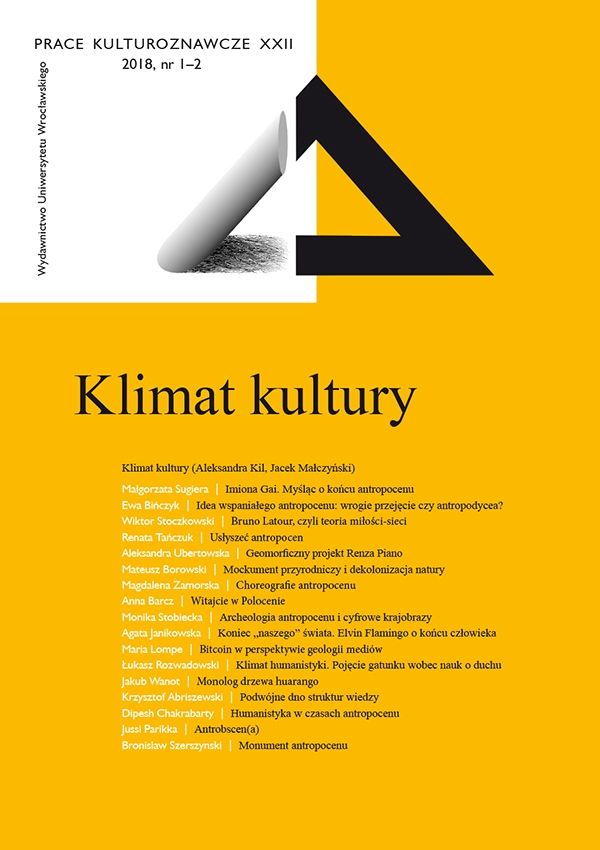

Strony redakcyjne

Gaïa’s names: Thinking about the end of Anthropocene
A debate about a new era in the history of the Earth has been under way for almost two decades, but it has focused merely on an adequate naming and scientifically verifiable dating of that period. What has been written about the Anthropocene lays bare specificity of methodologies and approaches of various research fields, but above all demonstrates locality and situatedness of knowledge produced within each of them.
The article starts with recalling a few remedies to catastrophic after-effects of the techno-scientific progress proposed by Isabelle Stangers, Donna Haraway, and Bruno Latour, who refer to chthonic powers. Although they give these powers the same name Gaïa, each of them differently defines an open-ended and emergent system of symbiotic relationships which was described by the British physiologist James Lovelock in the late 1970s. Next, the article presents the most important concepts of the new era that compete with the term “Anthropocene”: Capitalocene Jason W. Moore, Necrocene Justin McBrien, and Plantatiocene Anna Lowenhaupt Tsing. Finally the article focuses on Donna Haraway’s idea of prospective and speculative fabulation Staying with Trouble, 2016.
Haraway outlines a future after the Anthropocene, speculating about how to salvage naturecultural variability. She offers a radical redefinition of relationships between humans and others critters, biotic and abiotic agencies. She does not focus extensively, however, on holobionts in border area of biology and modern technologies which emerge in such contemporary projects as Species Series of an Corean artist Wonbin Yanga 2012, analysed in the paper.